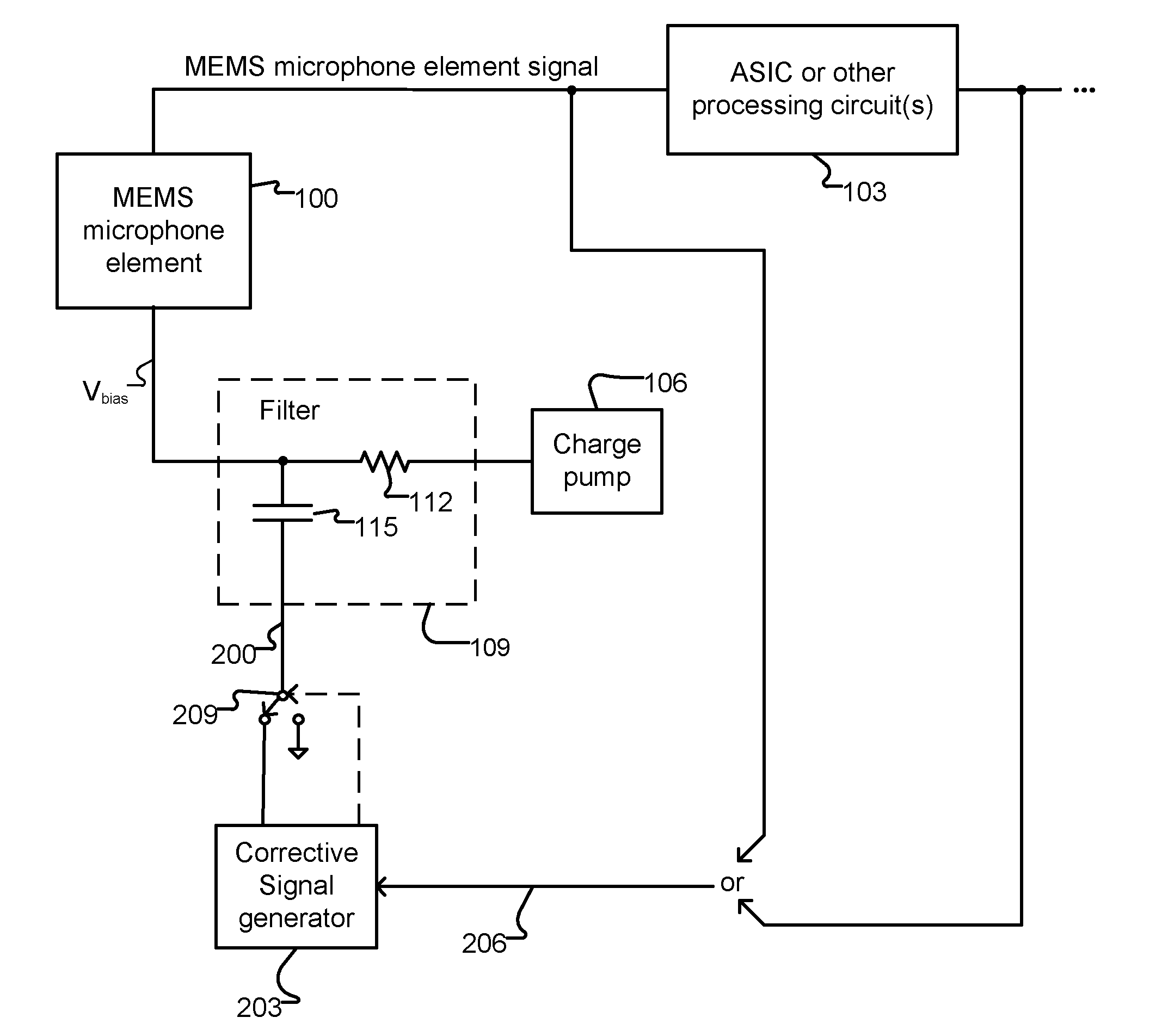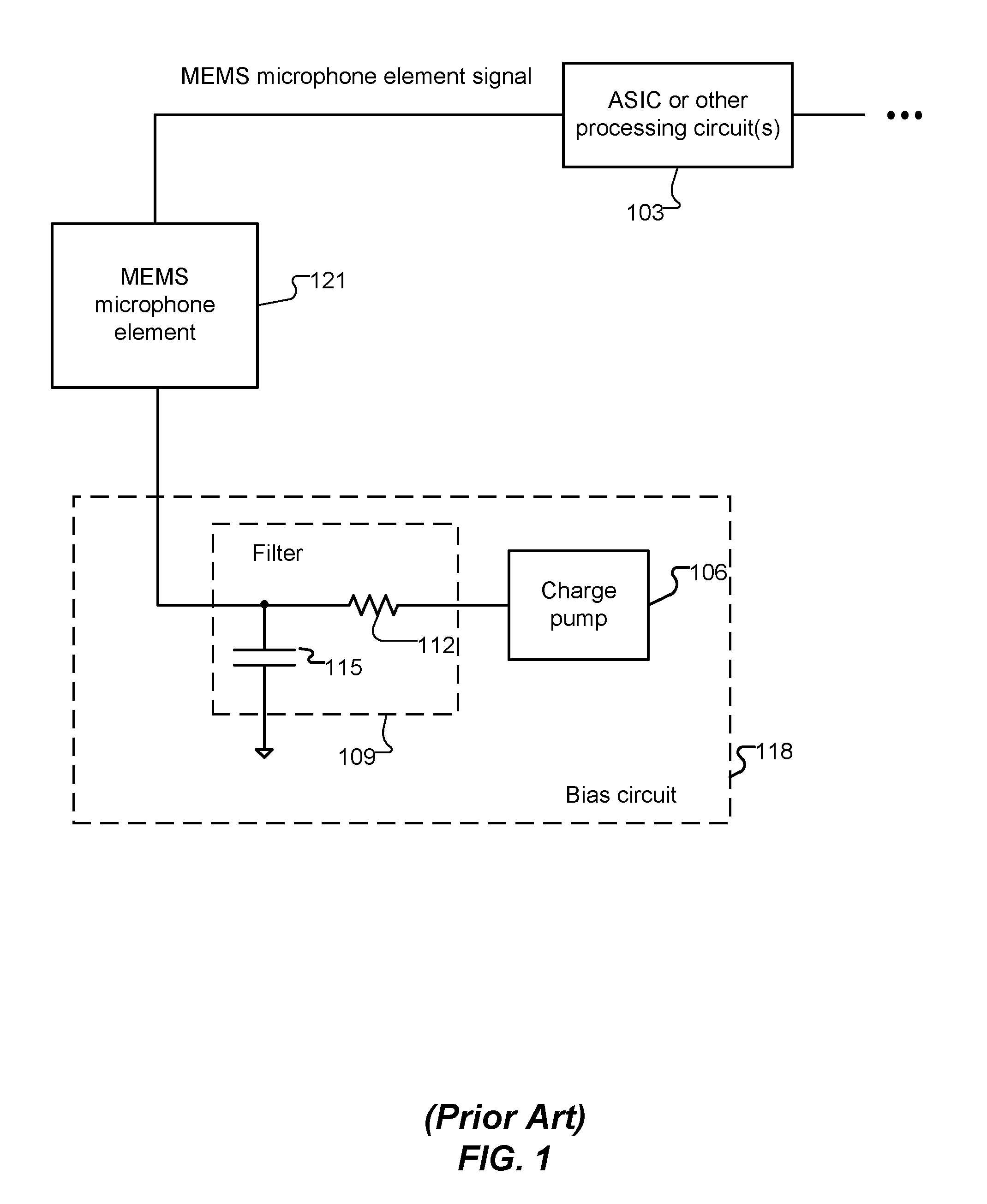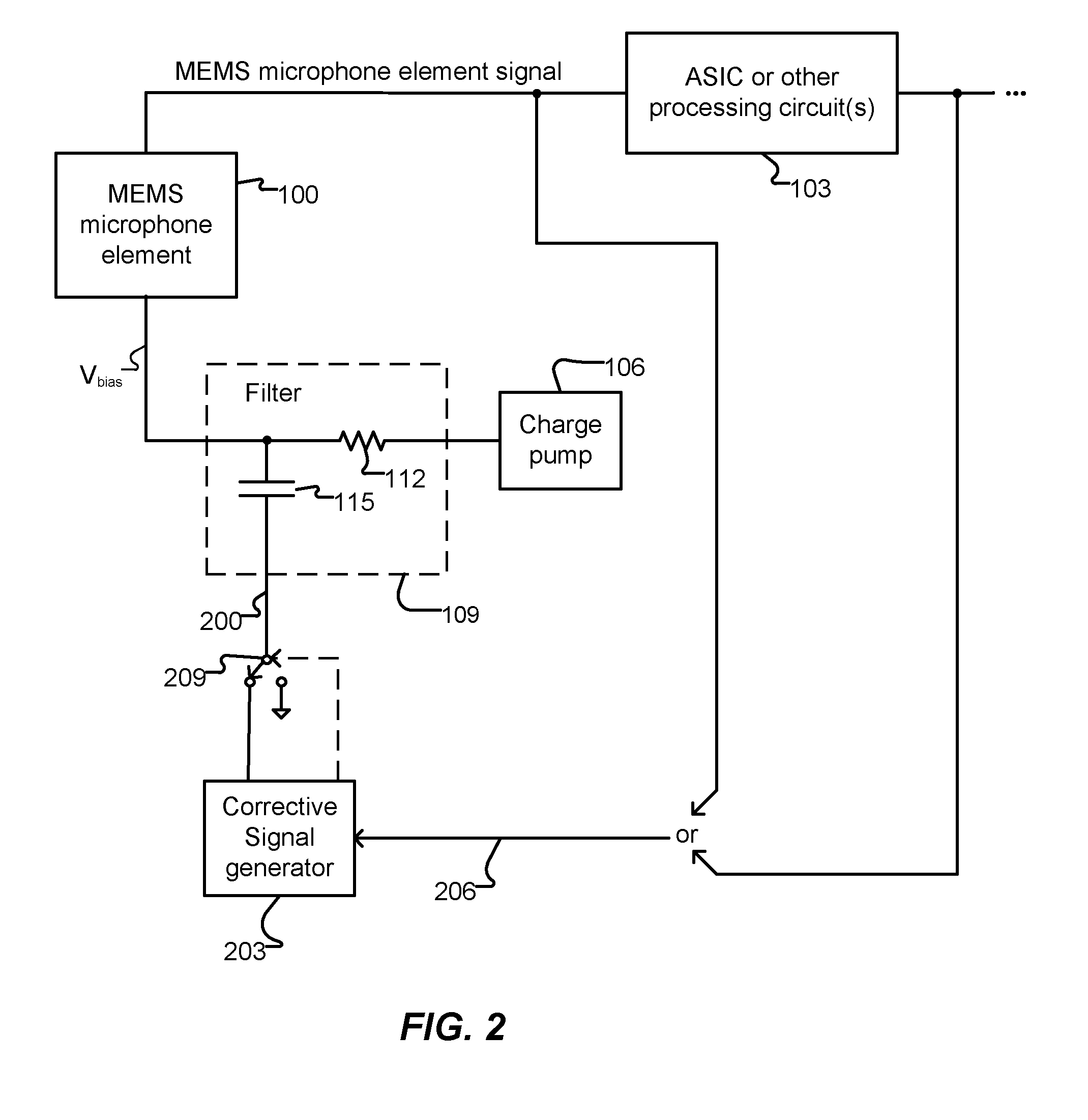Microphone with Programmable Frequency Response
a microphone and frequency response technology, applied in the field of capacitor microphones, can solve the problems of loss of signal contents, unsatisfactory distortion, signal clipping, etc., and achieve the effect of effectively removing the impedance and effectively couple the impedan
- Summary
- Abstract
- Description
- Claims
- Application Information
AI Technical Summary
Benefits of technology
Problems solved by technology
Method used
Image
Examples
Embodiment Construction
[0009]An embodiment of the present invention provides a microphone system. The microphone system includes a transducer, a first circuit and a second circuit. The transducer includes a vibratable structure configured to establish a capacitance that varies in accordance with an acoustic signal received by the transducer. The first circuit has an input coupled to the transducer to receive, via the input, an electrical signal that varies in accordance with the variable capacitance of the transducer. The first circuit has an output and is configured to process the received electrical signal and provide a corresponding processed electrical signal at the output. The second circuit is coupled to the input of the first circuit and to a node downstream of the output of the first circuit. The second circuit is configured to automatically detect when a signal from the downstream node meets a predetermined criterion and, in response, effectively couple an impedance to the input of the first circ...
PUM
 Login to View More
Login to View More Abstract
Description
Claims
Application Information
 Login to View More
Login to View More - R&D
- Intellectual Property
- Life Sciences
- Materials
- Tech Scout
- Unparalleled Data Quality
- Higher Quality Content
- 60% Fewer Hallucinations
Browse by: Latest US Patents, China's latest patents, Technical Efficacy Thesaurus, Application Domain, Technology Topic, Popular Technical Reports.
© 2025 PatSnap. All rights reserved.Legal|Privacy policy|Modern Slavery Act Transparency Statement|Sitemap|About US| Contact US: help@patsnap.com



